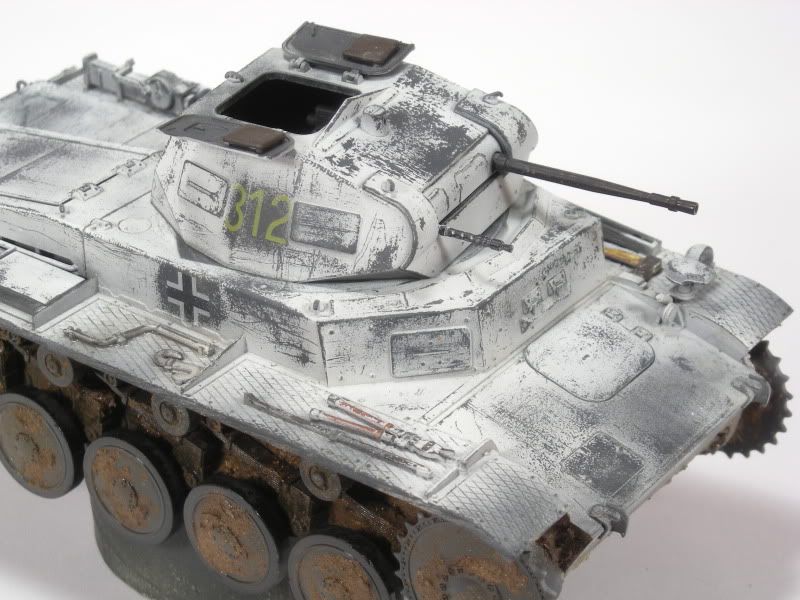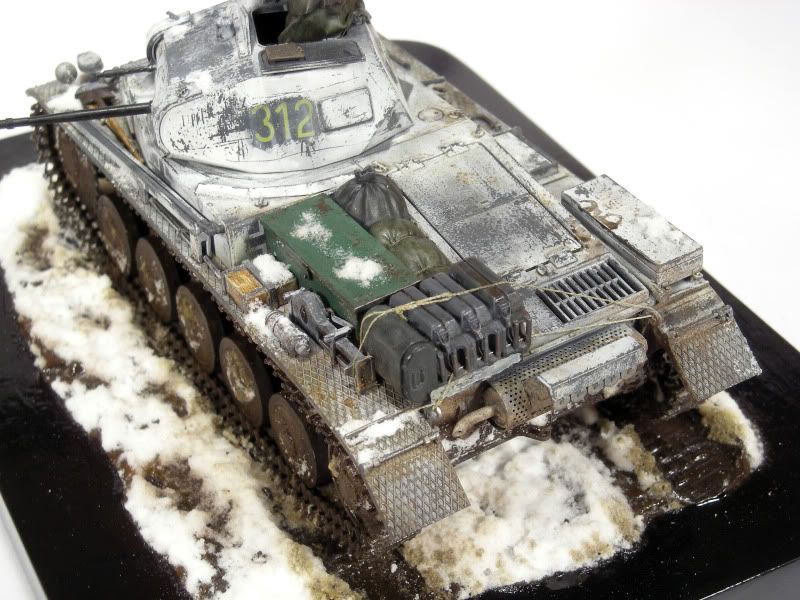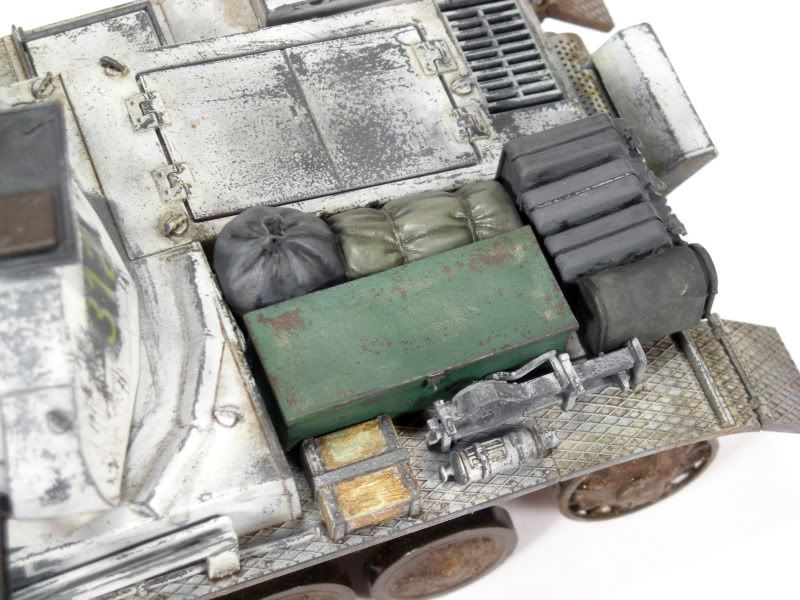I have done this technique a number of time for various things and feel like I have a good grasp on it. It's deceptively simple and takes some practice but can be mastered in no time.
Step one: Base color, This is your basic vehicle color. You can go ahead and weather it a little (fade, pin wash, ect) This will add another layer of realism to your paint job. The type of paint you use isn't important. I tend to use Tamiya paint thinned with lacquer thinner for my base colors because of the smooth finish.
Step two: is optional, you can add a clear coat to protect your base color and weathering but it's not absolutely needed.
Step three: Spray a couple of light coats of hair spray over the model. Keep the coats as even and light as possible. I have experienced some issues from a to heavy application. You can spray right out of the can or decant the hairspray into your airbrush for even more control. It's up to you.
Step four: Your top color or secondary camo color. Tamiya acrylics thinned with water preform the best. It is possible to use Life Color with success and to a lesser degree Vallejo but I would stick to Tamiya. It produces much finer chipping and flaking. For your purposes of doing a white wash you can give yourself a head start with the next step by varying the density of the white paint coat. DON'T flood the surface with wet paint or you will disrupt the Hairspray. I have had issues with it cracking on it's own because of this. Your top color needs to be thin and dry as possible using multiple layers. As i was saying before. If you know you want a lot of the white was say worn off the glacis plate then just apply the white paint thinner there to give yourself a head start. Take a look at my Tamiya Pz II as an example. 
The areas of thinner white such as the glacis and around turret numbers were intentionally painted that way. The white will flake off in finer pieces the thinner the paint is. It makes for a beautiful worn effect.
Step 5: Take various short brushes and some water and begin GENTLY wearing away the white paint. You don't need to slosh water onto it, it may take a few seconds but a damp brush will start desolving the hair spray and thus the white paint... Be specific and thoughtful about where you remove paint. You can also use instruments such as toothpicks and wire brushes for various other effects.
Step: 6: If you are done with the hair spray portion of the paint job you can clear coat it to protect it but it's not strictly necessary. If you use water bases weathering agents then YES clear coat it but if you use oil paints or enamels for washes and such you don't have to. Enamel thinner will not desolve the hair spray further. If you are unsure then go ahead and clear coat it with a gentle overspray of flat or satin clear.
Step 7: Weather as usual
See finished Pz II


For more options, You can weather individual pieces with the HS technique as well. This green box was done that way by spraying a dark rusty color on first then HS and then the green. I cut it back with a damp fine brush.

I used the HS technique in MULTIPLE layers on this Croat M-47. Each camo color, chip color and degraded paint layer was done with the HS method.

I hope this answers your questions. I'll be happy to elaborate on specific things if you want.